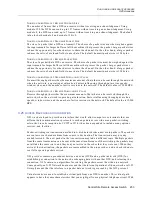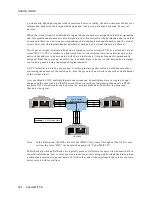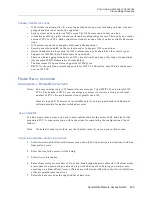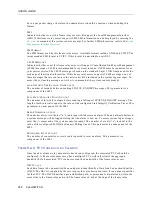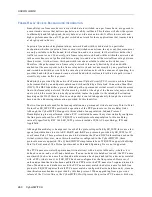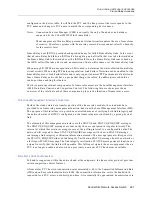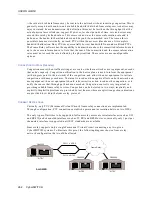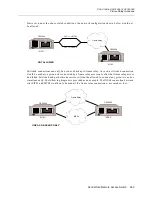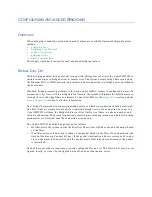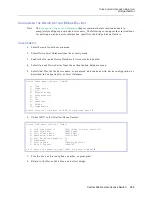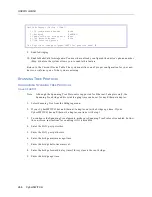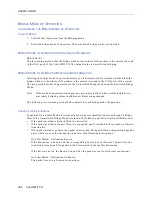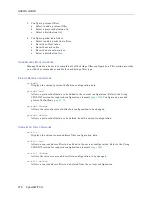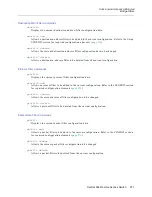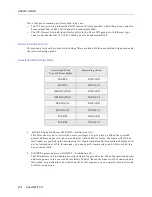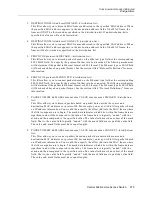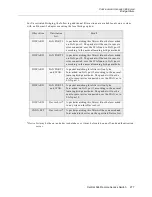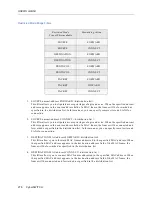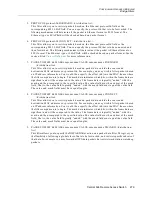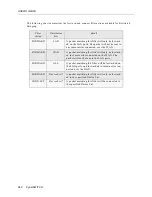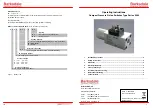
Central Site Remote Access Switch 267
C
ONFIGURING
A
DVANCED
B
RIDGING
Spanning Tree Protocol
S
PANNING
T
REE
P
ROTOCOL
C
ONFIGURATION
E
LEMENTS
Only the Ethernet-2 adapter supports the Spanning Tree Protocol in its entirety. Outlined below are
the Spanning Tree configuration elements that the User can define. These elements are available
when the system is running the local bridging option.
S
PANNING
T
REE
P
ROTOCOL
O
PTION
S
TATUS
You can enable or disable the Spanning Tree protocol for CyberSWITCHes with Ethernet-2
adapters.
BRIDGE PRIORITY
The configured priority for this system. The priority can range from 0 to 65535. The default is 32768.
LAN PORT <1
OR
2> PRIORITY
The configured priority for the indicated port.The priority can range from 0 to 255. The default is
128.
LAN PORT <1
OR
2> PATH COST
The configured path cost for this port. The cost can range from 1 to 65535. The default is 100.
BRIDGE MAX AGE
The configured maximum age-time for this system. This is used when the system is the root bridge.
The unit of age is in seconds, and ranges from 6 to 40. The default is 20 seconds.
BRIDGE HELLO TIME
The configured hello time interval for this system. This is used when the system is the root bridge.
The unit is in seconds, and ranges from 1 to 10. The default is 2 seconds.
BRIDGE FORWARD DELAY
The configured forward delay time for this system. This is used when the system is the root bridge.
The unit is in seconds and range from 4 to 30. The default is 15 seconds.
This parameter is available on systems with Ethernet-1 or Ethernet-2 adapters. If you are using
bridge dial out, you may wish to increase this value to prevent the connection from aging out before
the call is made.
S
PANNING
T
REE
P
ROTOCOL
B
ACKGROUND
I
NFORMATION
Spanning Tree Protocol is used to find paths among networks. The algorithm can generate all
possible paths and choose one. If that path becomes unavailable because a device goes down, an
alternate path is found. This algorithm is used by bridges to find the best path between devices, and
to make sure that no path loops occur. For a more detailed explanation of the Spanning Tree
protocol, refer to the 802.1d specification available from IEEE.

